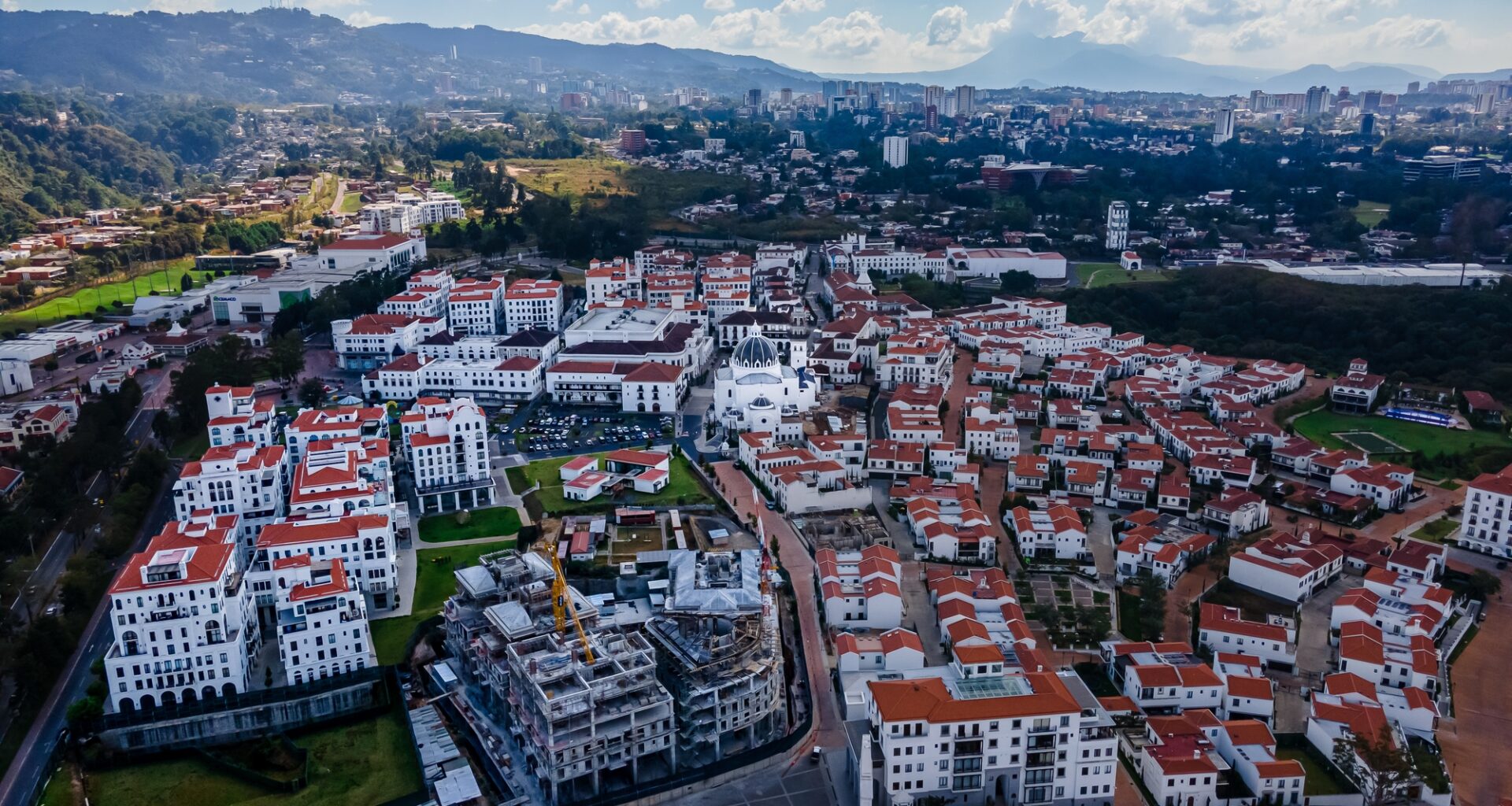 Overview of Ciudad Cayala, with some buildings in construction. Image © Gianfranco Vivi via Shutterstock
Overview of Ciudad Cayala, with some buildings in construction. Image © Gianfranco Vivi via Shutterstock
Share
Or
https://www.archdaily.com/1034953/the-cayala-paradox-how-are-private-districts-shaping-public-space-design-in-guatemala
Ciudad Cayalá, a privately developed, mixed-use community on the outskirts of Guatemala City, is often described as a “theme park” of white lime-washed walls, red tiles, and cobbled plazas. A closer examination, however, reveals a more complex urban narrative. Its significance, however, lies in its capacity to create a safe and well-managed public space, proposing a modern reinterpretation of historic urban principles that mark the region’s architectural and urban heritage. Behind the Antigua-style façades lies an urban experiment: a modern re-engagement with architectural elements like arcades, courtyards, and open plazas, which propose a privately-managed public space as a solution to urban challenges in the region.
The design of this space is based on a recognized planning philosophy: New Urbanism. This movement is based on principles of mixed-use development, walkability, and traditional neighborhood design that seeks to counter the fragmentation and car-dependence of post-war city sprawl. Cayalá’s master plan, conceptualized by the theorist Léon Krier whose previous work includes the British model town of Poundbury, was developed in collaboration with Guatemalan architects Pedro Godoy and María Sánchez of Estudio Urbano. Both hold an architecture master’s from Notre Dame in the United States, one of the few schools in the world that still teaches classic architecture in their program. This academic foundation helped them devise a strategy to transform Cayalá from a simple stylistic experiment into a deliberate, coherent urban strategy grounded in local precedents.






